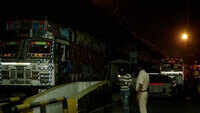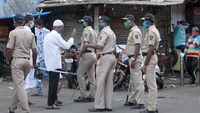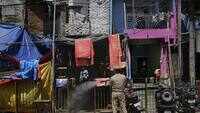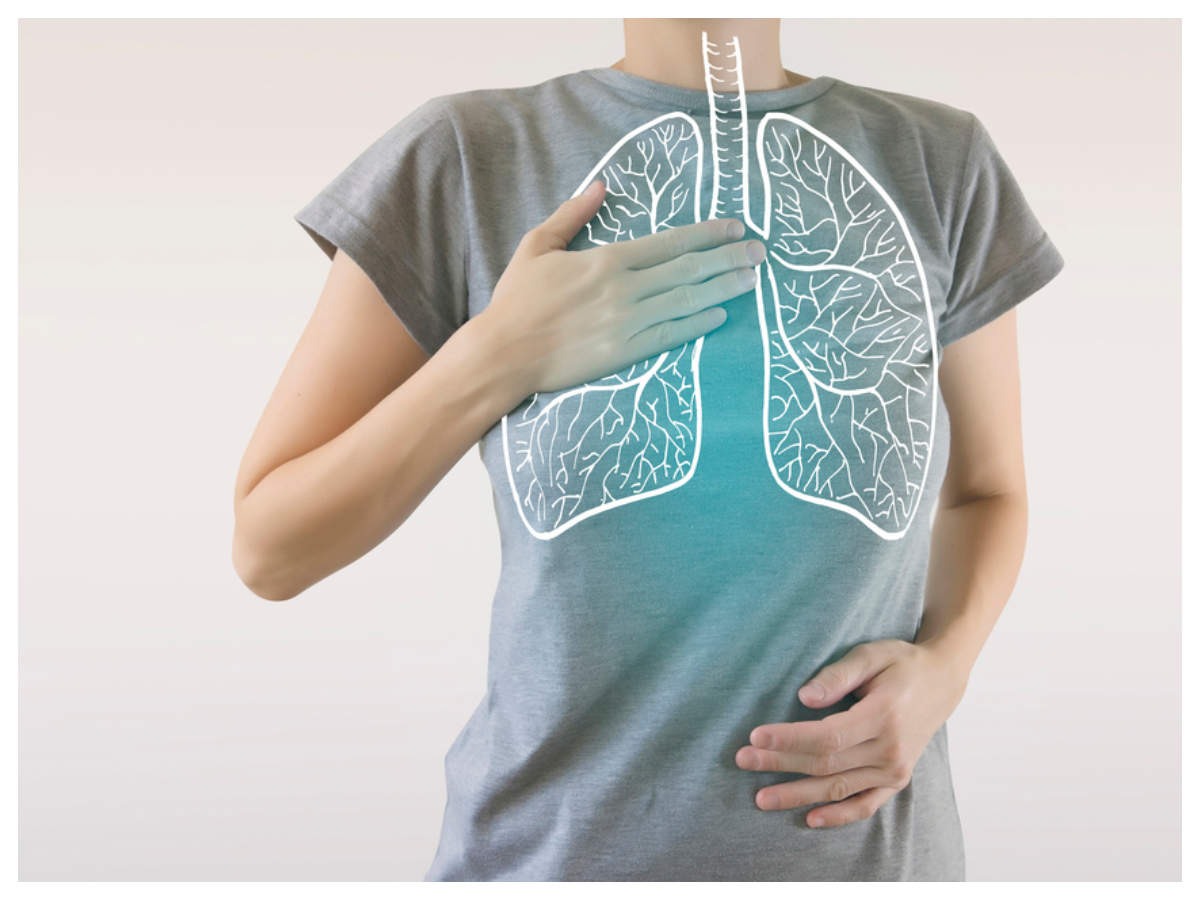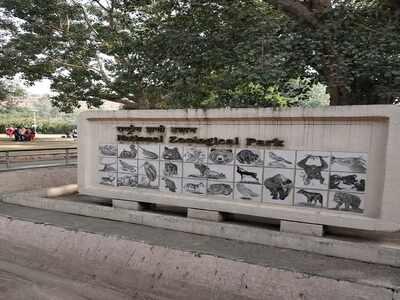
NEW DELHI: To feed its 20 big cats, the National Zoological Park on Mathura Road is slaughtering two-three buffaloes on its premises after the Ghazipur abattoir shut down following the Covid lockdown. The staff source buffaloes from nearby villages. The zoo cannot substitute red meat with, say, chicken because this will leave the felines protein deficient and cause ailments in the long run.
The staffers themselves bring dry fodder too from the mandis to the meet the nutritional demands of the herbivores in the zoo.
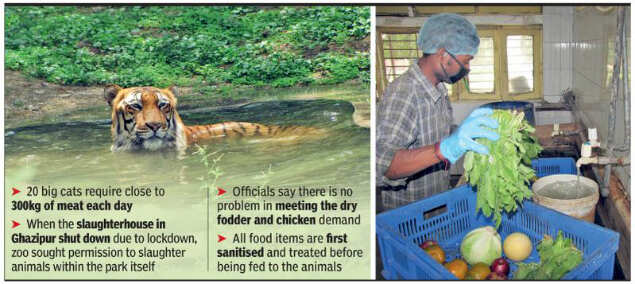
A Delhi zoo official said while contractors earlier procured both the dry feed and the red meat and chicken, the staff now has to go out with officials and collect the necessary items from different mandis. The whole exercise can take 6-8 hours each day.
The contractors carrying out the slaughter in the zoo are assisted by a veterinary officer to identify buffaloes from villages in proximity. The bovines are butchered at a special area on the complex created for this purpose. Delhi zoo recently requested East Delhi Municipal Corporation for permission for live slaughter on the zoological park premises. An EDMC official said permission was quickly granted given the zoo’s difficulties in procuring meat.
Dr Suneesh Buxy, director of Delhi zoo, said the 20 big cats require close to 300kg of meat each day. When the slaughter house in Ghazipur shut down for the pendency of the lockdown, the zoo stared at a nutritional crisis, but it managed to get timely permission from the municipal corporation to slaughter animals within the zoological park itself. “We created a sanitised and secure location to butcher the buffalos,” Buxy explained. “Our staff oversees the process of acquiring them, with each animal being first inspected by our veterinary staff before the contractors carry out the slaughtering.” He said there was no problem in meeting the dry fodder and chicken demand.
A zoo official involved in the collection said that all food items were first sanitised and treated before being fed to the animals and birds. Bio-security measures are being adhered to before the feed is released for distribution in the different enclosures.
“The procurement process takes several hours, while slaughtering is a different task that can take a couple of hours too. We have to pick up officials from various localities before heading to the mandi. There is a considerable risk involved, but we are ensuring each animal is fed well and is getting the proper diet,” said the official. He said there was surplus chicken supply, but this could not be fed to the big felines because of health precautions. “Red meat is the healthiest diet for them,” the official asserted.
The staffers themselves bring dry fodder too from the mandis to the meet the nutritional demands of the herbivores in the zoo.

A Delhi zoo official said while contractors earlier procured both the dry feed and the red meat and chicken, the staff now has to go out with officials and collect the necessary items from different mandis. The whole exercise can take 6-8 hours each day.
The contractors carrying out the slaughter in the zoo are assisted by a veterinary officer to identify buffaloes from villages in proximity. The bovines are butchered at a special area on the complex created for this purpose. Delhi zoo recently requested East Delhi Municipal Corporation for permission for live slaughter on the zoological park premises. An EDMC official said permission was quickly granted given the zoo’s difficulties in procuring meat.
Dr Suneesh Buxy, director of Delhi zoo, said the 20 big cats require close to 300kg of meat each day. When the slaughter house in Ghazipur shut down for the pendency of the lockdown, the zoo stared at a nutritional crisis, but it managed to get timely permission from the municipal corporation to slaughter animals within the zoological park itself. “We created a sanitised and secure location to butcher the buffalos,” Buxy explained. “Our staff oversees the process of acquiring them, with each animal being first inspected by our veterinary staff before the contractors carry out the slaughtering.” He said there was no problem in meeting the dry fodder and chicken demand.
A zoo official involved in the collection said that all food items were first sanitised and treated before being fed to the animals and birds. Bio-security measures are being adhered to before the feed is released for distribution in the different enclosures.
“The procurement process takes several hours, while slaughtering is a different task that can take a couple of hours too. We have to pick up officials from various localities before heading to the mandi. There is a considerable risk involved, but we are ensuring each animal is fed well and is getting the proper diet,” said the official. He said there was surplus chicken supply, but this could not be fed to the big felines because of health precautions. “Red meat is the healthiest diet for them,” the official asserted.

Coronavirus outbreak
Trending Topics
LATEST VIDEOS
More from TOI
Navbharat Times
Featured Today in Travel
Get the app
